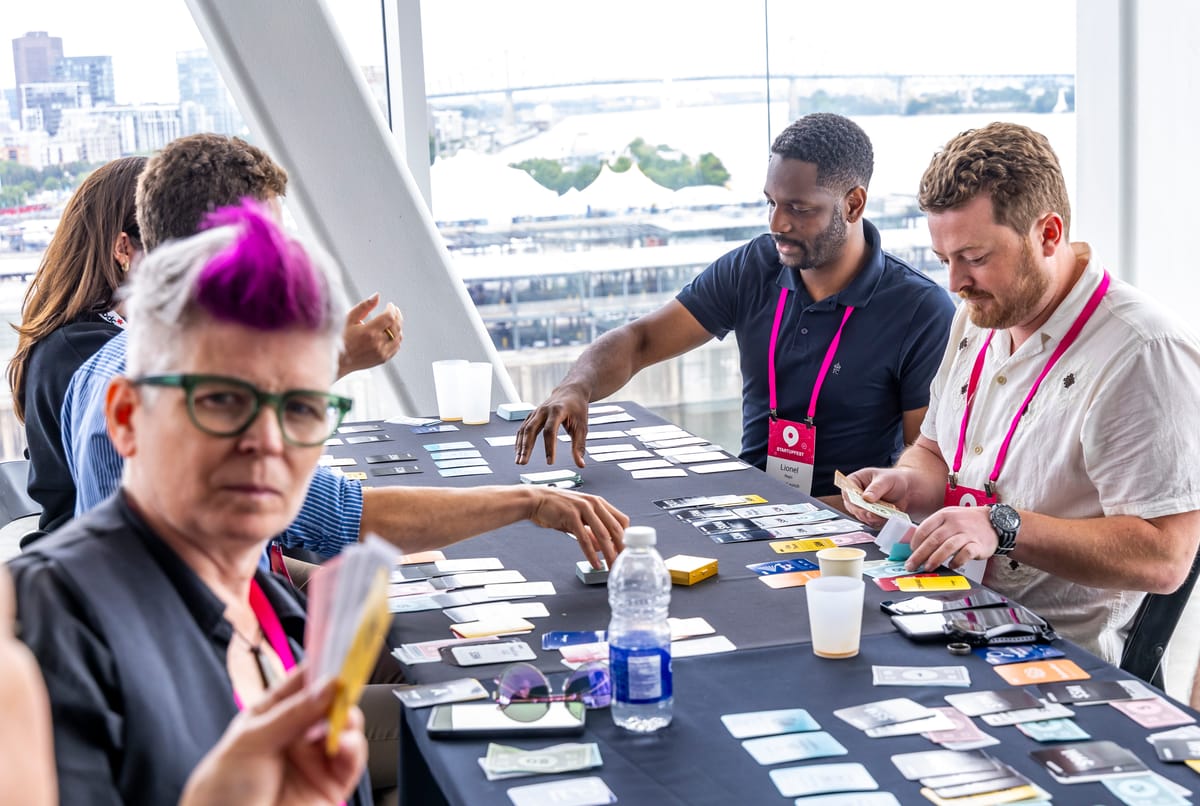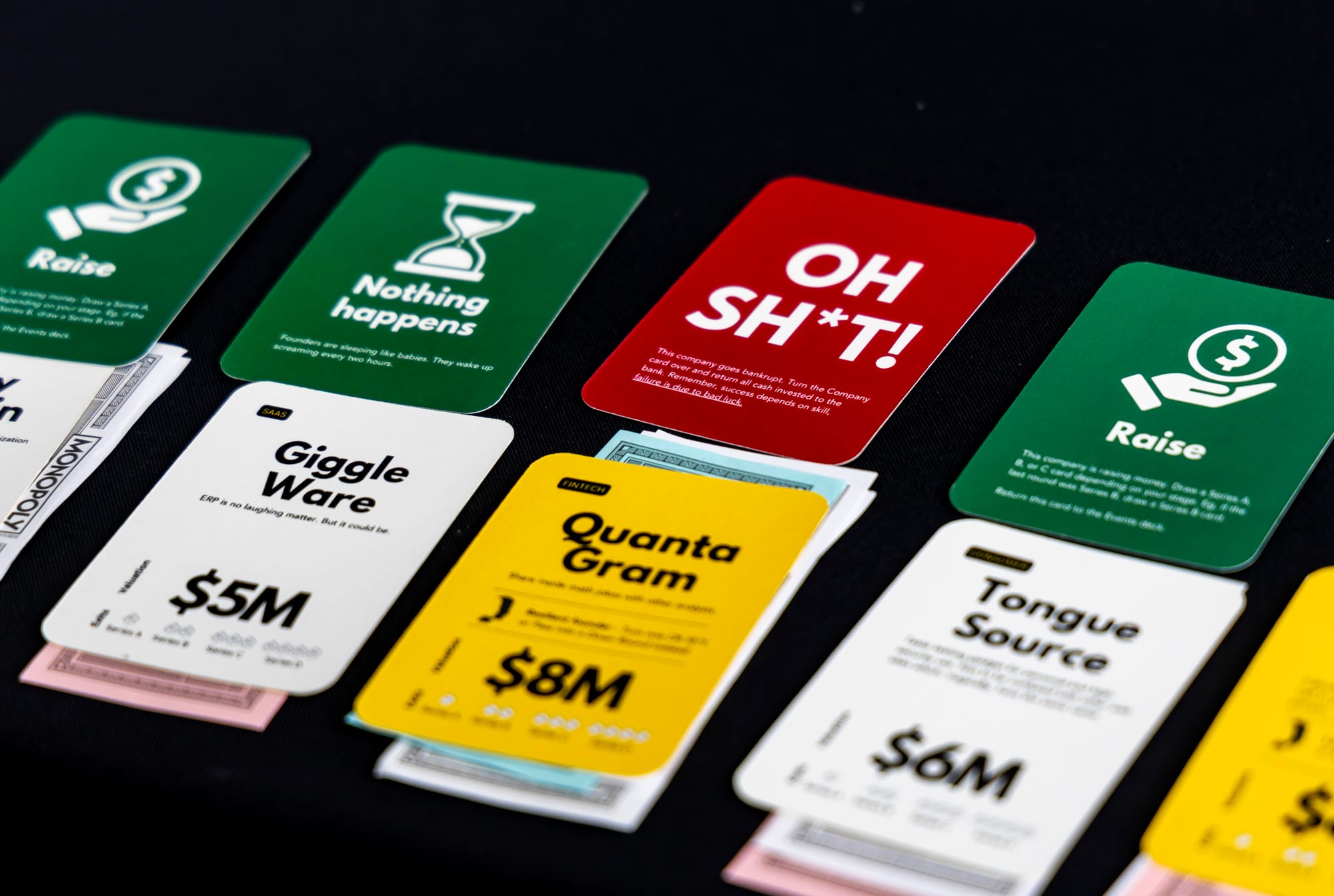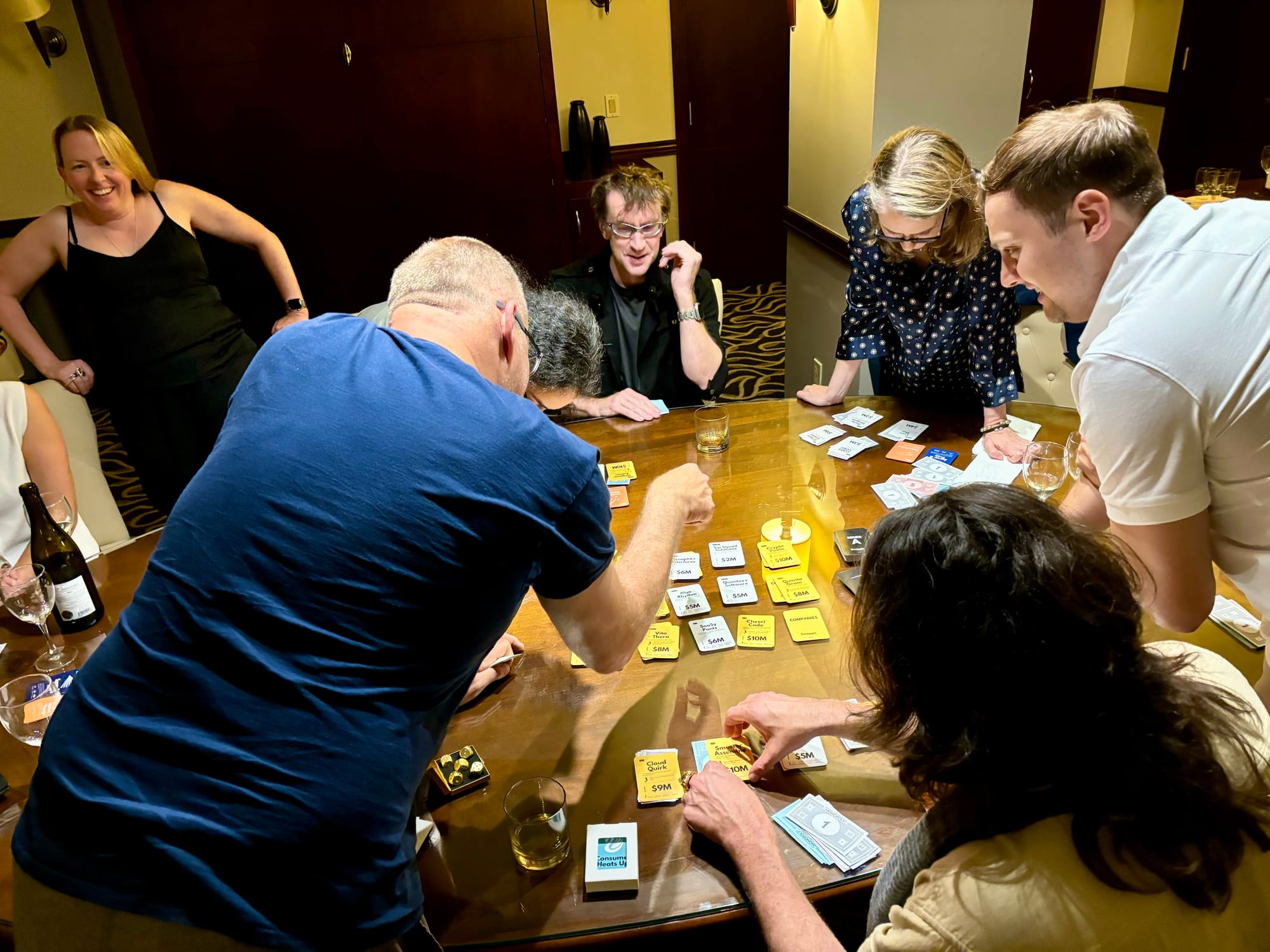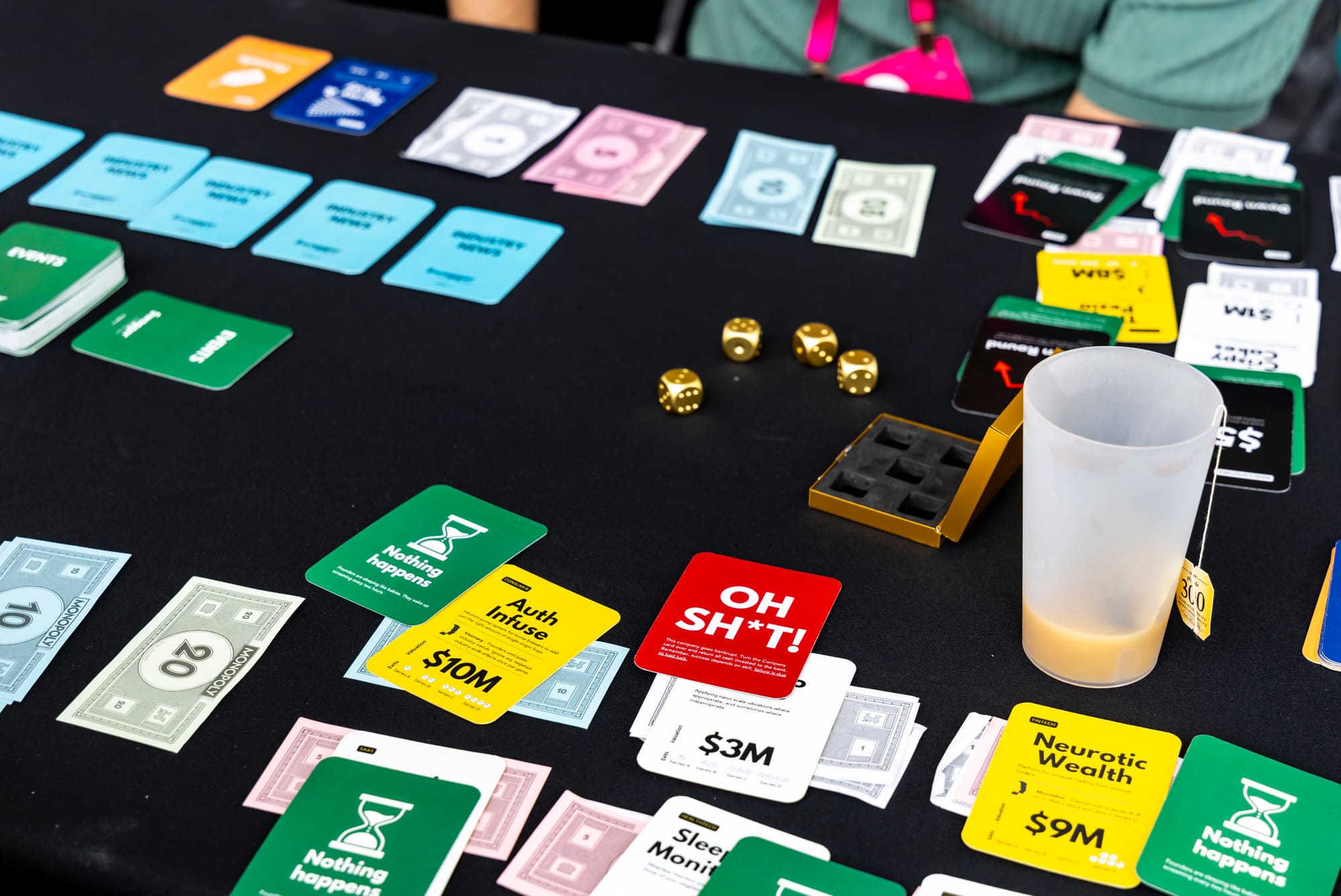Game design notes Aug 7, 2024
An update where the game is headed based on feedback from playtesters.

Over the last two months I've run 6 Swagger playtests in groups of roughly 20 each:
- Montreal - board game group, Startupfest speakers, Startupfest founders
- Toronto - Schulich Tech MBA, Chaitech accelerator
- Ottawa - Flow/Deloitte founder workshop
This gave me a push to try some new things, print new cards and honestly have a ton of fun.
There is still a lot of work to be done before I consider Swagger ready to launch. But as a teaching tool led by a facilitator (me) it definitely works well and people enjoy it.
Here are the top things I've learned based on player feedback and some general directions I'm heading in.
Events are too random (and boring)
Currently players turn over an Event card for each company in their portfolio to reveal what happens in that year. There are 3 possibilities: nothing, fundraise or bankruptcy (the Oh Sh*t card). This adds unpredictability into the game and tinkering with the Event deck allows you to make it easier or more difficult, eg more raises and fewer bankruptcies.

At a playtest with a group of non-founders who were very experienced board gamers, this is what they said:
Good teaching tool. Bad game.
Ouch.
A lot of their feedback was focused on Events. They said turning over random cards was not fun because there was nothing for them to do. It felt like solitaire.
They suggested adding player choice into events, eg instead of automatic bankruptcy force the player to choose between two (bad) options.
I agree. I also think only having 3 types of event cards makes the game predictable after a few turns.
Choosing companies is not fun
I introduced a new mechanism where a set number of Company cards are available at the beginning of the game. Players have to choose them in turn. I was trying to restrict the “dealflow” available to players and get them to compete for the best cards.

In its current state it's still too easy for players to get all the cards they need for their chosen strategy, eg all Fintech companies. So can everyone else which makes selection kind of pointless.
I thought about having an auction to start the game but, especially in larger groups, this would be very messy.
More player interaction
After the initial setup and company selection, Swagger feels too much like a game each player plays independently, just on the same table.
I introduced some player Actions, the most “PvP” one being the Cramdown card which allows a player to muscle in to another player's deal and take it over. The first time I saw this played it was very fun seeing players threaten each other.
Co-investing would force players together. But that doesn't mean each person wouldn't act in their own interest, just like a real VC.
I don't want this to turn into a board simulation but I love the idea of adding more decisions, negotiations and back-stabbing.
A few other things
- Money handling is annoying especially in large groups. I currently use Monopoly money and it's showing me that a) people like handling paper money but b) too much time is wasted counting cash. Even calculating exits involves a calculator. I'm going to try chips or tokens as my next experiment.
- The small type on cards is too small. This is purely a self-inflicted design issue. One of the things I love about cards is the ability to extend the game by printing new variations or rules. But too much reading slows the game down especially if you're playing it only once.
- Swagger takes more space than I'd like with 4 players. Each player needs room for their portfolio cards, event and fundraising cards and money. The middle of the table is used for the various decks. One advantage of co-investing is replacing individual portfolios with a shared pool of companies in the middle.

I definitely feel closer to solving the bigger challenges of the game. From the beginning I've wanted to make a game that was both educational with fun. Each iteration gets closer to the right balance.
Have ideas I haven't thought about? Please leave a comment.